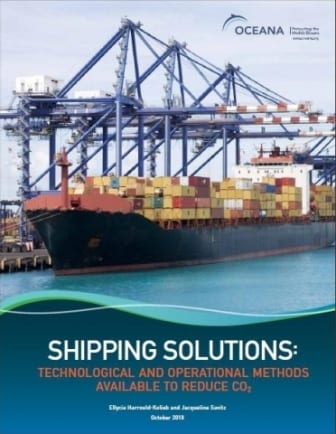Report | October, 2010
Shipping Solutions: Technological and Operational Methods Available to Reduce CO2
Global shipping is a major contributor of carbon dioxide to the atmosphere. Operational and technical measures that can drastically reduce emissions are available to the existing fleet, and need to be used. In 2007 shipping was responsible for approximately 3.3 percent of global carbon dioxide (CO2) emissions (over 1 billion tonnes).
If the global shipping fleet were a nation it would be the sixth largest emitter of carbon dioxide, only emitting less than China, the United States, Russia, India and Japan. In the absence of emission reduction policies, emission scenarios predict a doubling to tripling of 2007 emission levels by 2050.
The growth in shipping due to an expansion of global trade is projected to be responsible for a substantial increase in future emissions. Although technological advances will allow newbuilds to be more efficient the than ships of today, a sizable portion of the current fleet is relatively young and will potentially be in service for many years to come. These ships could continue to be on the water for decades. Consequently, reductions in emissions that could be achieved by phasing in more efficient vessels will be slow.




